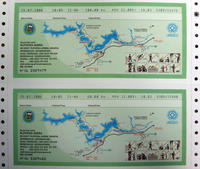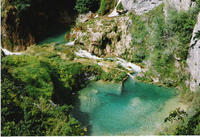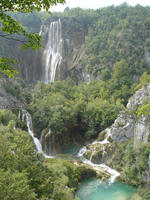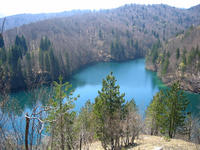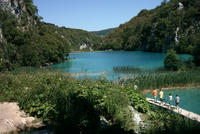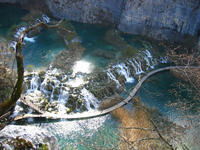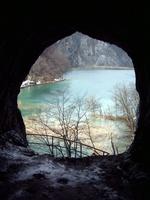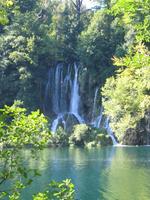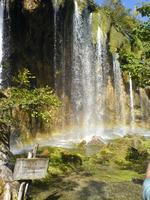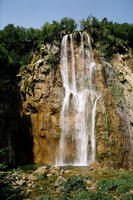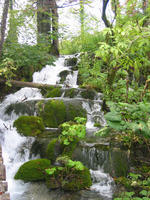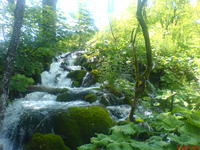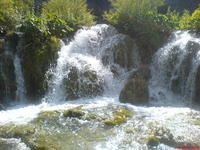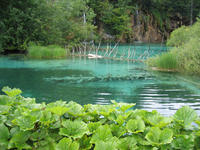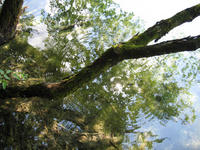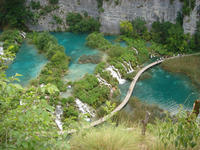You are in: Europe -> Croatia -> Plitvice Lakes Natio... , and traditional search or Image Gallery will yield results of this site only
Plitvice Lakes National Park
| Site number: | 98 |
|
| Type of site: | Natural | |
| Date of Inscription: | 1979, 2000 | |
| Location: | Europe, Croatia, County of Lika-Senj, 10km east of Bihac | |
Up to 75 images are shown here. Click on each for more details or on Image Gallery for more images.
| Description: | Over thousands of years the flow of water over the limestone and chalk have deposited travertine barriers, producing natural dams which in turn have created a series of striking lakes, caves and waterfalls. The geological progression continues today. The park’s forests are home to bears, wolves and various rare bird species. --WHMNet paraphrase from the description at WHC Site, where additional information is available. | |
| The Plitvice Lakes, are a national park in Croatia, in the Plitvice Lakes municipality, near the border with Bosnia and Herzegovina. Humans have inhabited the Plitvice Lakes area for thousands of years. It has been settled in turn by Illyrians, Thracians, Celts, Japods, Romans, Avars, Slavs and Turks. In 1528 the area fell to the Ottomans before being retaken by the Austrian Empire 150 years later. The Austrians subsequently incorporated it into their Military Frontier and, in addition to the native Croats who already inhabited the region, Serbs who had fled Ottoman repression settled there. The Plitvice Lakes had became a major tourist attraction in the late 19th century. The first hotel was built there in 1896, and as early as 1893 it already had a conservation committee - the predecessor of today's national park authority. In 1949 the communist government of Yugoslavia nationalised the lakes and made them a national park. The park was inscribed on the UNESCO World Heritage List in 1979 in recognition of its "outstanding natural beauty, and the undisturbed production of travertine (tuff) through chemical and biological action". The park soon became one of Yugoslavia's most popular tourist attractions. However, in March 1991 it became the scene of the Plitvice Lakes incident - the first armed confrontation of the Croatian War of Independence that resulted in fatalities. The park was held by forces of the Republic of Serbian Krajina during the conflict and suffered some damage in the process, with hotels and other facilities being used as barracks. It was retaken by the Croatian Army in August 1995 during Operation Storm, which ended the Croatian war. The war led UNESCO to add the park to its List of World Heritage in Danger. Due to the economic importance of the park, the Croatian government made it a priority for its de-mining efforts, and in December 1998 UNESCO recognised the park's newly mine-free status by removing it from the list of endangered sites. However, the surrounding Plitvice municipality outside the park boundary still has some problems with mine contamination. The Plitvice Lakes are today one of Croatia's biggest tourist attractions. In 2000, the national park was expanded by a further 102 km². The Plitvice Lakes national park is heavily forested, mainly with beech, spruce, and fir trees, and features a mixture of Alpine and Mediterranean vegetation. It has a notably wide variety of plant communities, due to its range of microclimates, differing soils and varying levels of altitude. --Wikipedia. Text is available under the Creative Commons Attribution-ShareAlike License. | ||
| Source: | http://whc.unesco.org/en/list/98 | |
| Reference: | 1. UNESCO World Heritage Center, Site Page. | |



